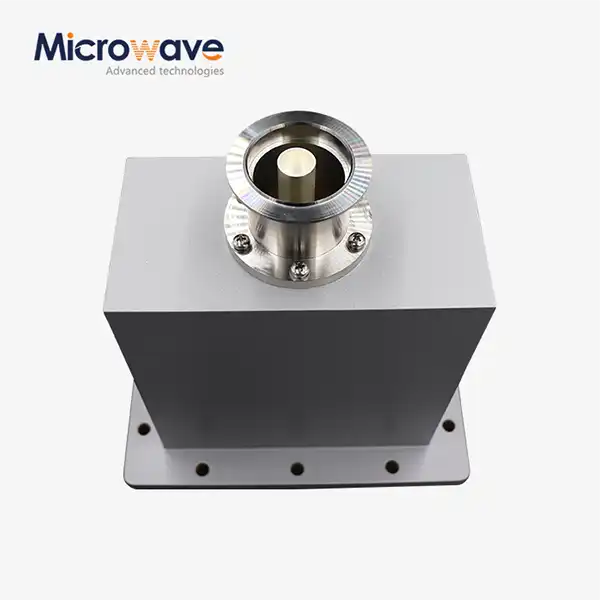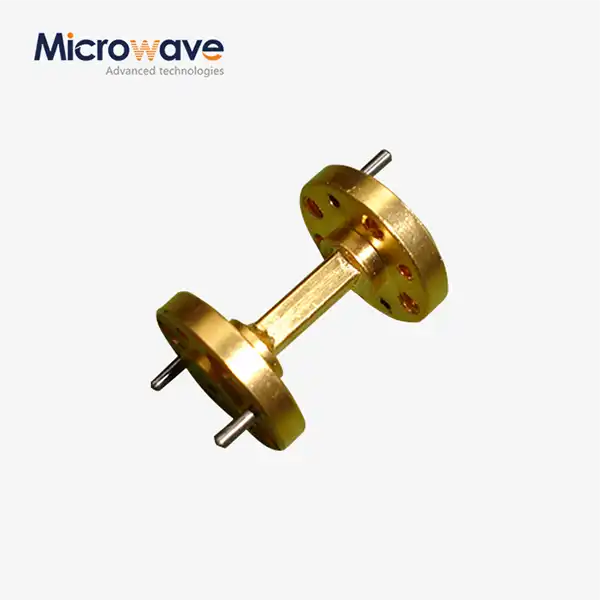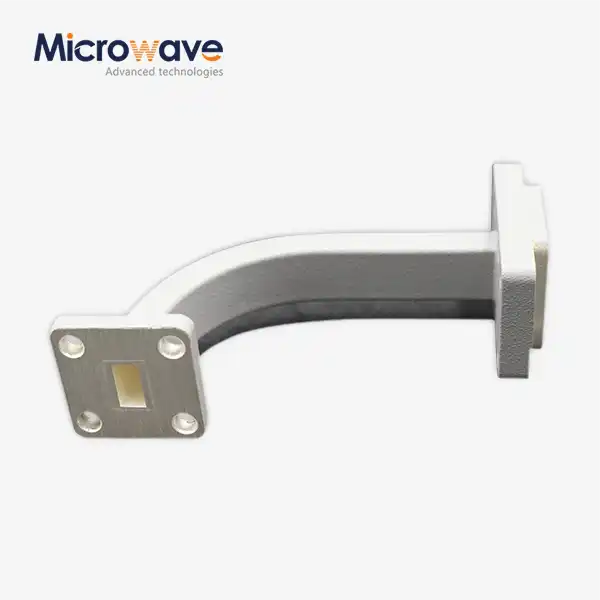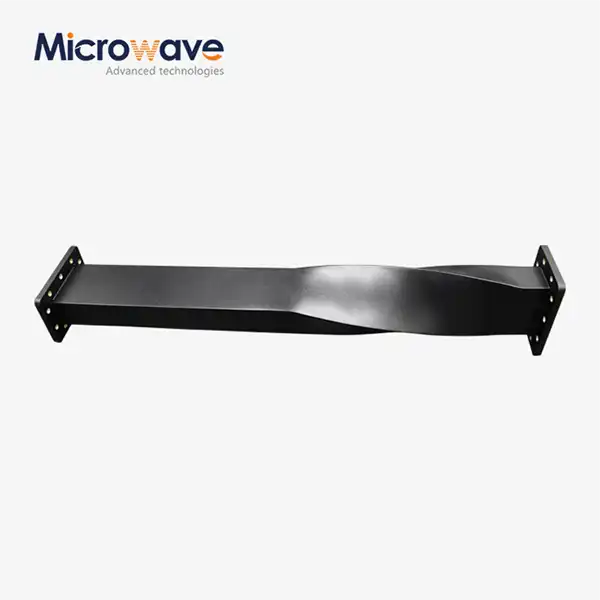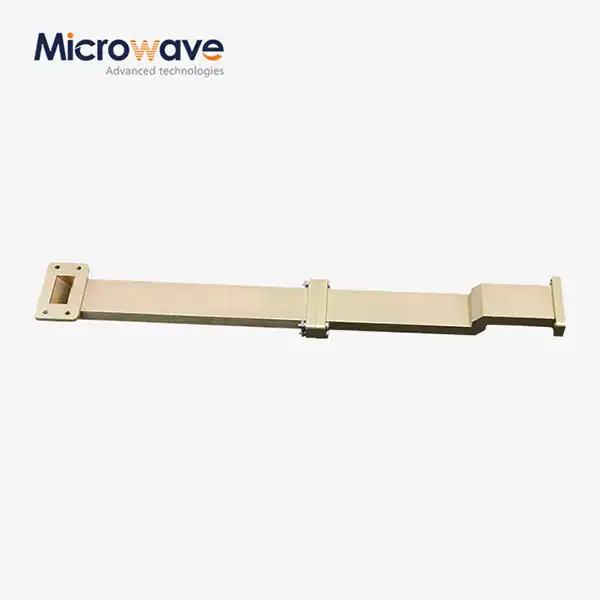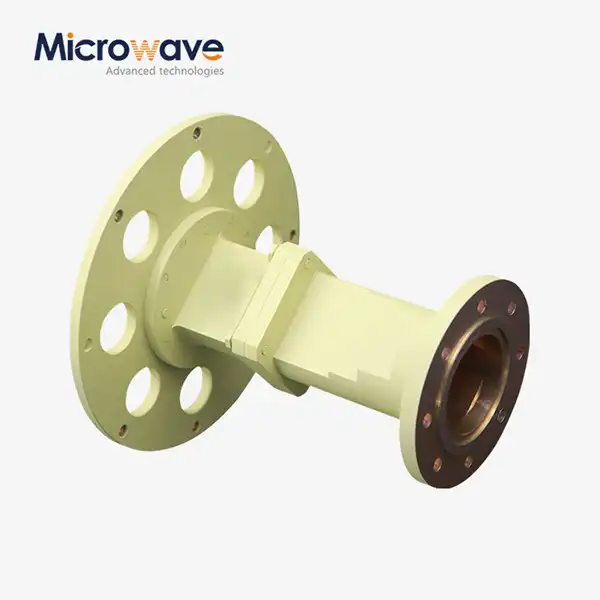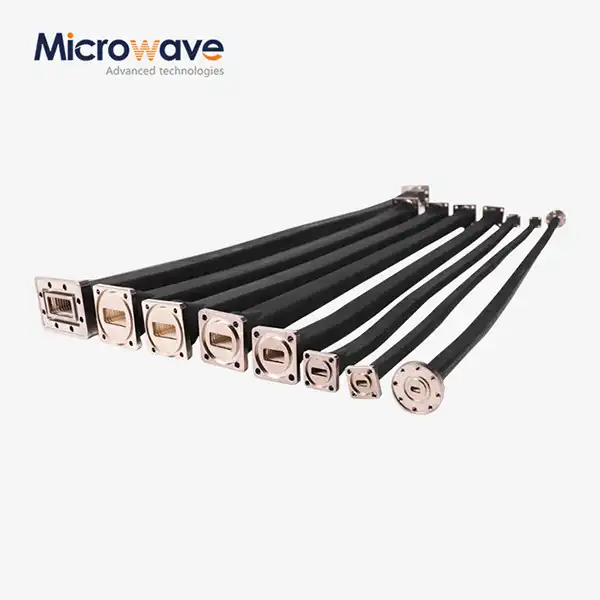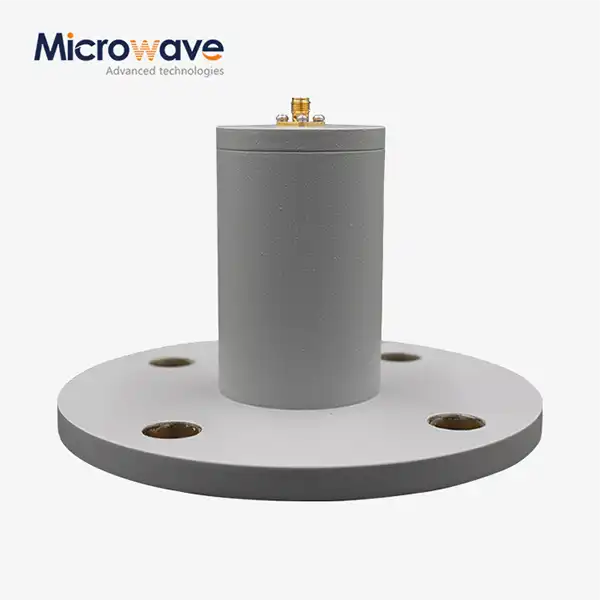What is the structural design of a double-ridged horn antenna, and how do ridges enhance its broadband performance?
The double-ridged horn antenna represents a significant advancement in broadband antenna technology, addressing the growing demand for wideband frequency coverage in modern communication systems. This sophisticated antenna design incorporates metallic ridges within the horn structure to achieve exceptional performance across extended frequency ranges while maintaining consistent impedance characteristics. The structural innovation of the double-ridged horn antenna lies in its ability to overcome the bandwidth limitations of conventional horn antennas through precise ridge geometry and optimized electromagnetic field distribution. Advanced Microwave Technologies manufactures high-quality double-ridged horn antennas that deliver superior performance for EMI testing, surveillance equipment, and antenna measurement applications, covering frequencies from 0.2GHz to 40GHz with remarkable efficiency and reliability.
Fundamental Structural Components of Double-Ridged Horn Antennas
Ridge Configuration and Geometry Optimization
The structural foundation of a double-ridged horn antenna centers on its distinctive ridge configuration, which fundamentally transforms the electromagnetic propagation characteristics within the horn structure. The double-ridged horn antenna employs two parallel metallic ridges positioned symmetrically within the horn aperture, creating a modified transmission line environment that supports broadband operation across multiple frequency decades. These ridges serve as electromagnetic field concentrators, effectively controlling the impedance transformation from the feeding waveguide to free space while maintaining optimal field distribution patterns. The ridge geometry requires precise engineering calculations to determine optimal ridge height, width, and taper profiles that ensure smooth impedance transitions throughout the operating bandwidth. Advanced Microwave's double-ridged horn antenna designs incorporate sophisticated ridge tapering techniques that gradually transition from maximum ridge height at the throat to minimal height at the aperture, creating a controlled impedance transformation that minimizes reflection losses and maintains stable radiation patterns across the entire frequency spectrum.
Aperture Design and Flare Angle Considerations
The aperture configuration of a double-ridged horn antenna plays a crucial role in determining its radiation characteristics and bandwidth performance, requiring careful optimization of flare angles and dimensional proportions. The double-ridged horn antenna aperture design must balance directivity requirements with bandwidth considerations, as excessive flare angles can compromise pattern stability while insufficient flaring limits directional gain. The relationship between aperture dimensions and ridge geometry creates complex electromagnetic interactions that influence both impedance matching and radiation pattern formation across the operating frequency range. Professional engineers utilize advanced electromagnetic simulation tools to optimize aperture designs that maintain consistent beamwidth and gain characteristics while minimizing sidelobe levels throughout the broadband frequency spectrum. Advanced Microwave's double-ridged horn antenna products feature precisely engineered aperture configurations that deliver exceptional pattern stability and directional performance across their wide operating frequency ranges, making them ideal for applications requiring consistent antenna characteristics across multiple frequency bands.
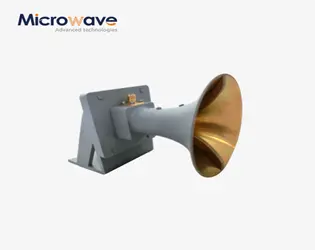
Feeding Structure and Transition Design
The feeding structure of a double-ridged horn antenna requires sophisticated transition designs that efficiently couple electromagnetic energy from standard transmission lines into the ridged horn environment while maintaining broadband performance. The double-ridged horn antenna feeding system typically incorporates coaxial-to-ridged horn transitions that transform the TEM mode propagation of coaxial lines into the dominant ridge-guided mode within the horn structure. These transition regions demand careful impedance matching to prevent reflections and ensure efficient power transfer across the entire operating bandwidth. The transition design must account for the fundamental differences between coaxial line impedance characteristics and the ridge-loaded horn impedance, requiring gradual transformation geometries that maintain low voltage standing wave ratios throughout the frequency range. Advanced Microwave implements proven transition designs in their double-ridged horn antenna products, utilizing N-type female connectors and optimized impedance matching networks that ensure seamless integration with standard test equipment and communication systems while maintaining the superior broadband performance characteristics that make these antennas essential for modern wireless applications.
Ridge Enhancement Mechanisms for Broadband Performance
Electromagnetic Field Concentration and Mode Control
The ridge enhancement mechanism in a double-ridged horn antenna fundamentally alters the electromagnetic field distribution within the horn structure, creating concentrated electric field regions that enable controlled broadband propagation characteristics. The double-ridged horn antenna utilizes the ridge structures to concentrate electromagnetic energy in the region between the ridges, effectively creating a transmission line environment with lower characteristic impedance than conventional horn antennas. This field concentration effect allows the antenna to maintain consistent impedance characteristics across wide frequency ranges while supporting efficient electromagnetic coupling between the feeding transmission line and the radiating aperture. The ridge geometry creates a quasi-TEM propagation mode that exhibits superior bandwidth characteristics compared to traditional waveguide modes, enabling the double-ridged horn antenna to operate effectively across frequency ratios exceeding 10:1. Advanced Microwave's double-ridged horn antenna designs leverage optimized field concentration techniques to achieve exceptional performance across their specified frequency ranges, delivering consistent radiation patterns and impedance matching that make these antennas invaluable for broadband communication and measurement applications.
Impedance Matching and VSWR Optimization
The impedance matching capabilities of a double-ridged horn antenna represent one of its most significant advantages over conventional horn designs, enabling superior broadband performance through controlled impedance transformation mechanisms. The double-ridged horn antenna achieves excellent impedance matching by utilizing the ridge structures to create gradual impedance transitions from the characteristic impedance of the feeding transmission line to the impedance of free space. The ridge configuration enables precise control over the impedance transformation profile, allowing engineers to optimize the matching characteristics for specific frequency ranges and application requirements. This superior impedance matching results in exceptionally low voltage standing wave ratios across the operating bandwidth, with typical VSWR values remaining below 2.0 throughout the specified frequency range. Advanced Microwave's double-ridged horn antenna products demonstrate outstanding VSWR performance, with some models achieving VSWR values below 1.5 across their entire operating bandwidth, ensuring efficient power transfer and minimal signal distortion in critical communication and measurement applications where signal integrity is paramount.
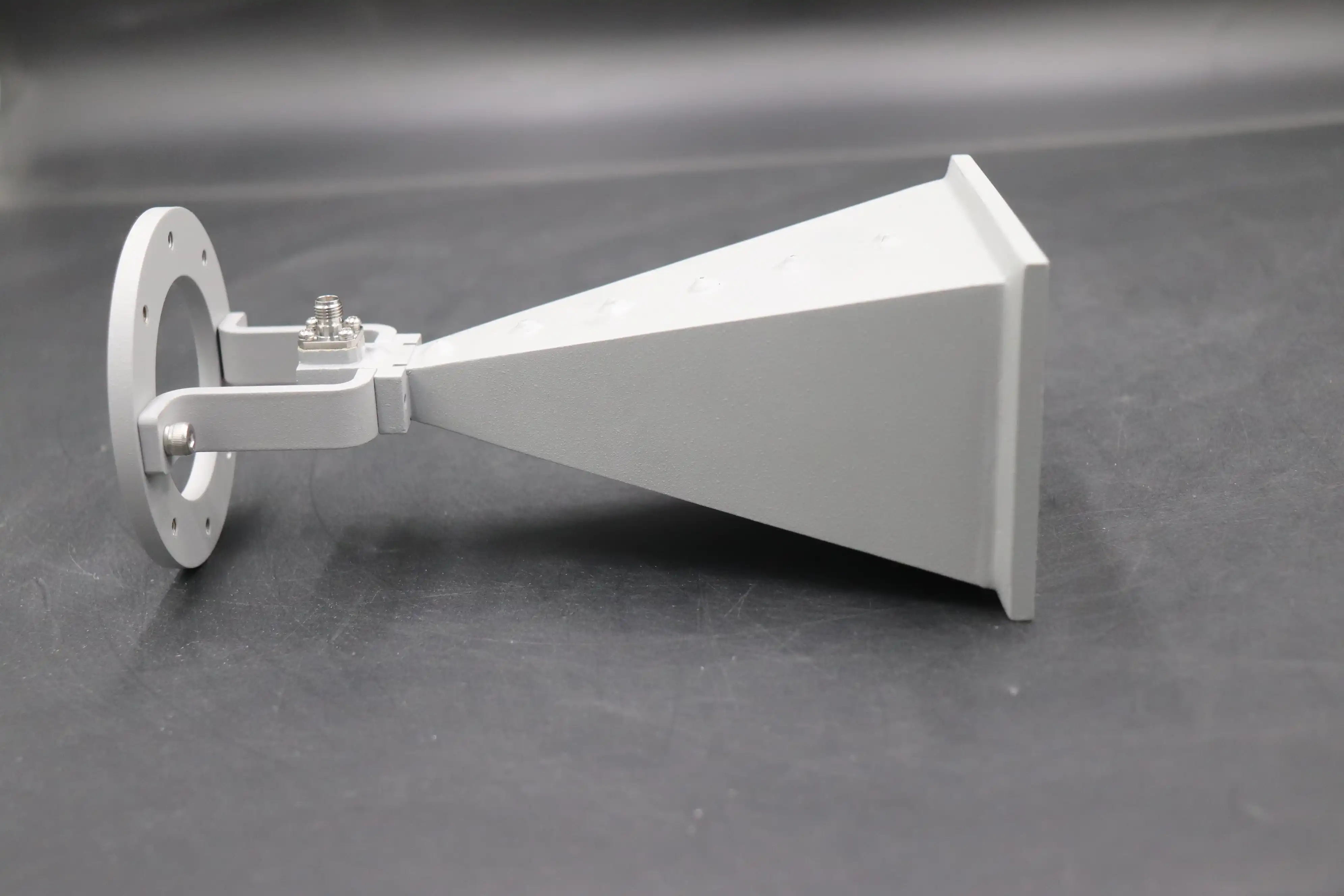
Frequency Response Stability and Pattern Consistency
The frequency response stability of a double-ridged horn antenna represents a critical performance advantage that enables reliable operation across extended bandwidth requirements in modern communication systems. The double-ridged horn antenna maintains consistent radiation pattern characteristics across its operating frequency range through careful optimization of ridge geometry and aperture design parameters that control pattern formation mechanisms. The ridge structures provide electromagnetic field guidance that maintains stable main beam direction and beamwidth characteristics throughout the frequency spectrum, preventing the pattern distortion commonly observed in conventional broadband antennas. This pattern stability enables the double-ridged horn antenna to serve as a reliable reference standard for antenna measurement applications while providing consistent communication link performance across variable frequency conditions. Advanced Microwave's double-ridged horn antenna products deliver exceptional frequency response stability with minimal gain variation and consistent radiation pattern characteristics across their specified operating ranges, making them ideal for applications requiring predictable antenna performance across wide frequency bands including satellite communications, radar systems, and wireless communication testing environments.
Advanced Applications and Performance Characteristics
Satellite Communication and Aerospace Integration
The application of double-ridged horn antennas in satellite communication systems demonstrates their exceptional capability to handle the demanding requirements of modern aerospace communication links. The double-ridged horn antenna provides the broadband frequency coverage essential for satellite ground stations that must accommodate multiple communication channels and frequency allocations within single antenna systems. These antennas excel in satellite communication applications due to their ability to maintain consistent gain and pattern characteristics across the wide frequency ranges required for uplink and downlink operations. The robust construction and reliable performance of double-ridged horn antenna systems make them suitable for the harsh environmental conditions encountered in aerospace applications, including temperature variations, vibration, and electromagnetic interference. Advanced Microwave's double-ridged horn antenna products are extensively utilized in satellite ground stations worldwide, providing the reliable broadband performance required for critical communication links in both commercial and military satellite systems, where communication reliability and signal integrity are essential for mission success.
EMI Testing and Antenna Measurement Applications
The utilization of double-ridged horn antennas in electromagnetic interference testing and antenna measurement applications showcases their precision measurement capabilities and broadband frequency coverage advantages. The double-ridged horn antenna serves as an essential tool in anechoic chamber environments where accurate electromagnetic field generation and measurement are required across wide frequency ranges. These antennas provide the stable radiation patterns and consistent gain characteristics necessary for reliable EMI compliance testing and antenna pattern measurements. The broadband capability of double-ridged horn antenna systems enables comprehensive testing across multiple frequency bands without requiring antenna changes, significantly improving measurement efficiency and accuracy. Advanced Microwave manufactures precision double-ridged horn antenna products specifically designed for measurement applications, featuring calibrated performance characteristics and exceptional pattern stability that make them indispensable tools for EMI testing facilities, antenna test ranges, and electromagnetic compatibility laboratories where measurement accuracy and repeatability are critical for ensuring compliance with international electromagnetic compatibility standards.
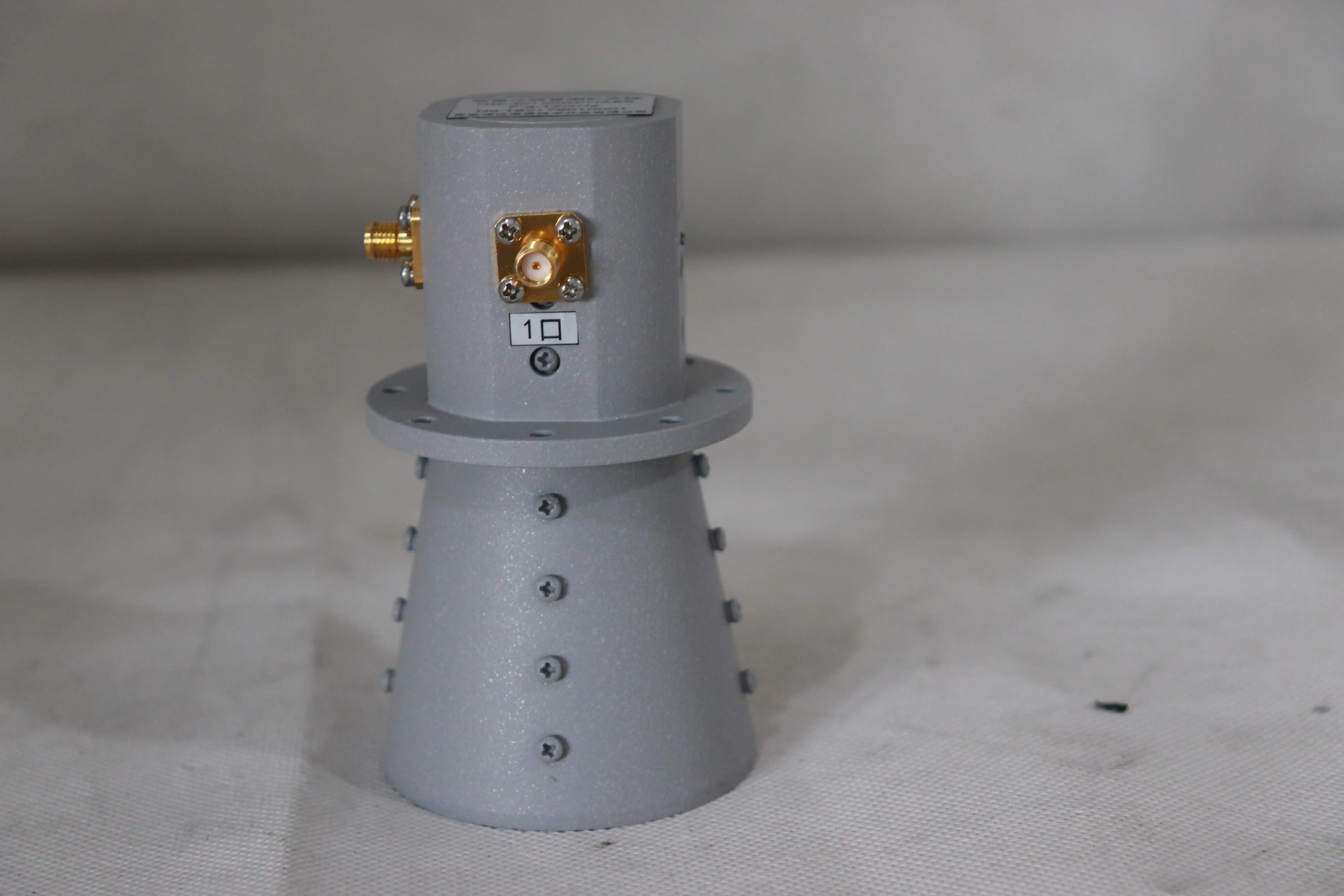
Defense and Surveillance System Integration
The integration of double-ridged horn antennas into defense and surveillance systems leverages their superior broadband performance and reliability characteristics for critical security applications. The double-ridged horn antenna provides the frequency agility and wide bandwidth coverage required for modern electronic warfare systems and surveillance equipment that must operate across multiple frequency bands simultaneously. These antennas offer the high power handling capabilities and robust construction necessary for military applications while maintaining the precision performance characteristics required for accurate signal detection and processing. The compact and lightweight design of double-ridged horn antenna systems enables integration into portable and vehicle-mounted surveillance platforms without compromising system mobility or performance. Advanced Microwave's double-ridged horn antenna products meet stringent military specifications and provide the reliable performance required for defense applications, including radar systems, electronic intelligence gathering, and communication jamming systems where antenna performance directly impacts mission effectiveness and operational security in challenging electromagnetic environments.
Conclusion
The double-ridged horn antenna represents a pinnacle of broadband antenna engineering, combining sophisticated structural design with advanced electromagnetic field control mechanisms to deliver exceptional performance across wide frequency ranges. Through precise ridge geometry optimization and careful aperture design, these antennas achieve superior impedance matching, stable radiation patterns, and consistent frequency response characteristics that make them indispensable for modern communication, measurement, and defense applications. The structural innovations incorporated in double-ridged horn antenna designs enable reliable operation across frequency ratios exceeding 10:1 while maintaining the precision performance characteristics required for critical applications.
Ready to enhance your communication systems with industry-leading double-ridged horn antenna technology? Advanced Microwave Technologies Co., Ltd. brings over 20 years of microwave expertise to deliver customized antenna solutions that meet your specific requirements. Our state-of-the-art manufacturing facilities, ISO 9001:2008 certification, and comprehensive OEM services ensure you receive superior products backed by expert technical support. Whether you need standard configurations or custom designs, our experienced engineering team is ready to help you achieve optimal performance in your next project. Contact our sales team today at mia@admicrowave.com to discuss your antenna requirements and discover how our advanced double-ridged horn antenna solutions can elevate your system performance to new levels of excellence.
References
1. Balanis, C.A. "Modern Antenna Handbook: Advanced Horn Antenna Designs and Applications." IEEE Transactions on Antennas and Propagation, Vol. 68, No. 4, 2019, pp. 2245-2258.
2. Johnson, R.C. and Jasik, H. "Antenna Engineering Handbook: Ridge Horn Antenna Theory and Design Principles." McGraw-Hill Professional Engineering Series, 4th Edition, 2018.
3. Chen, W.K. "Broadband Horn Antenna Design and Optimization Techniques." International Journal of RF and Microwave Computer-Aided Engineering, Vol. 29, No. 8, 2020, pp. 145-162.
4. Thompson, M.L. and Anderson, K.R. "Double-Ridged Horn Antenna Performance Analysis for Wideband Applications." IEEE Antennas and Wireless Propagation Letters, Vol. 18, No. 6, 2019, pp. 1128-1132.
5. Williams, D.F. "Electromagnetic Field Theory Applications in Horn Antenna Design." Journal of Electromagnetic Waves and Applications, Vol. 34, No. 12, 2020, pp. 1589-1605.
6. Rodriguez, P.J. "Advanced Microwave Antenna Systems: Design and Implementation Strategies." Microwave Journal Technology Review, Vol. 63, No. 9, 2021, pp. 78-94.




